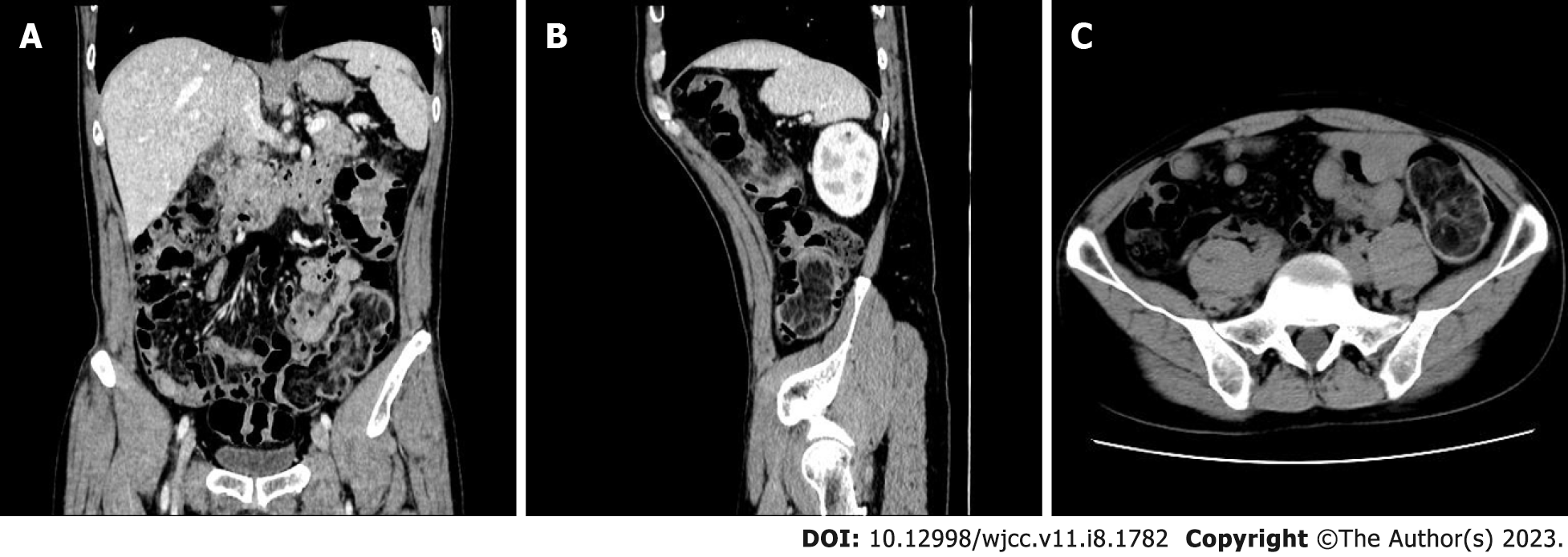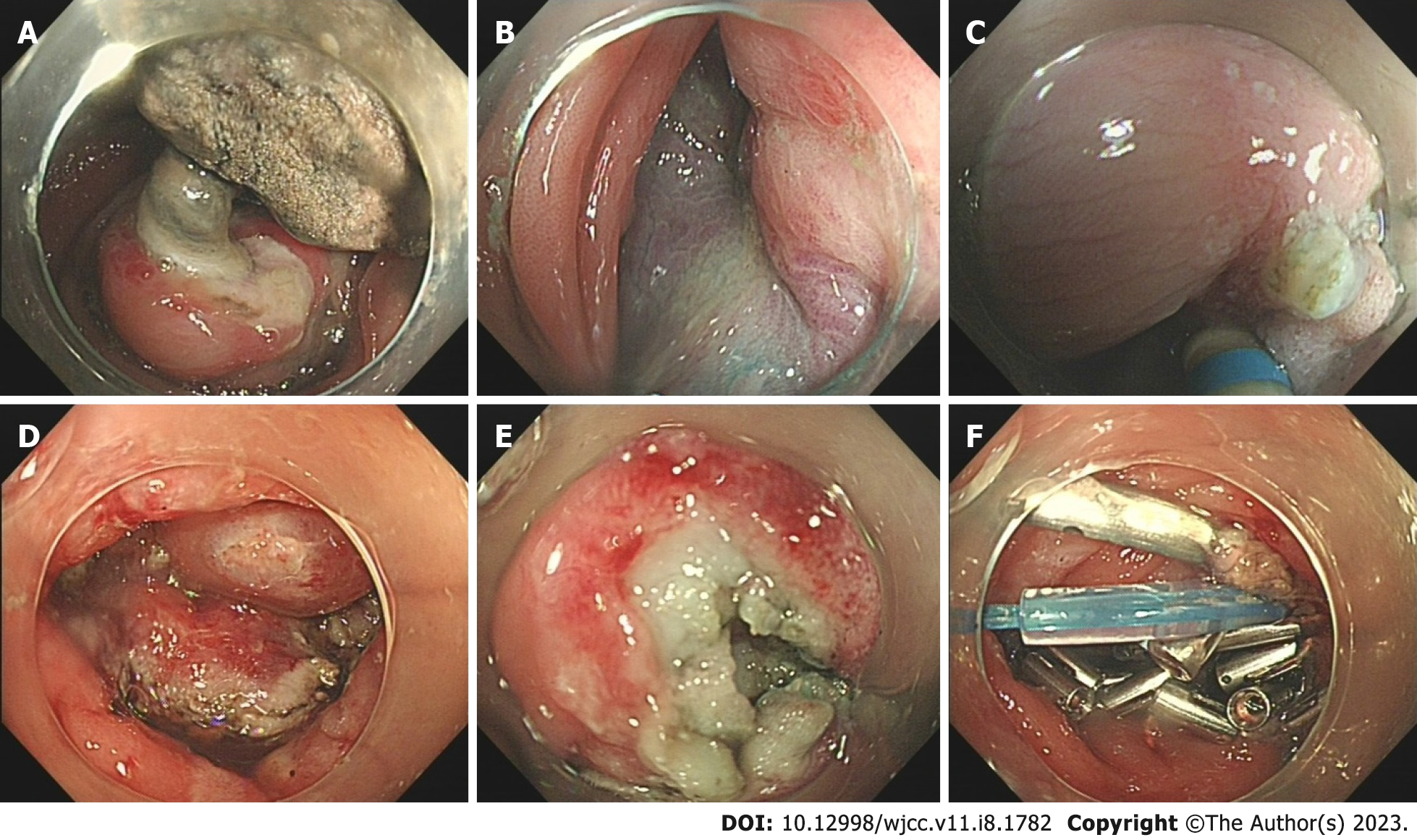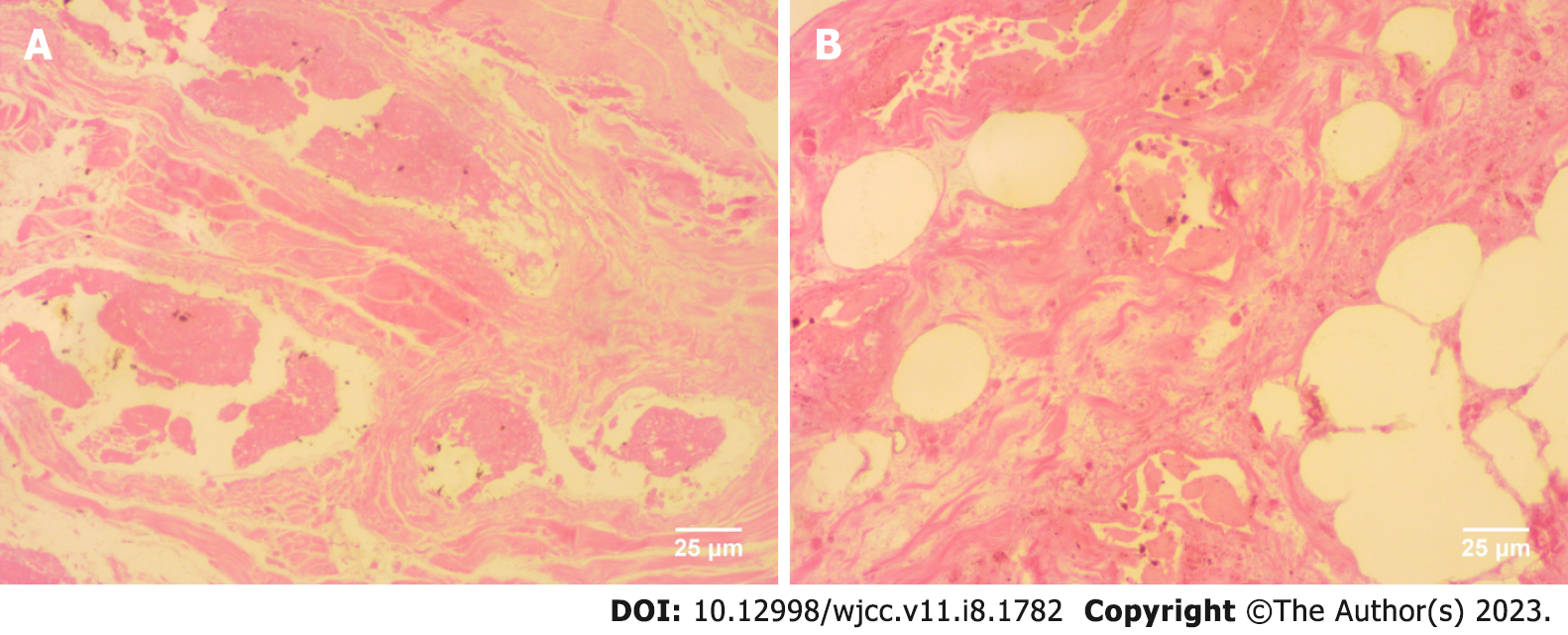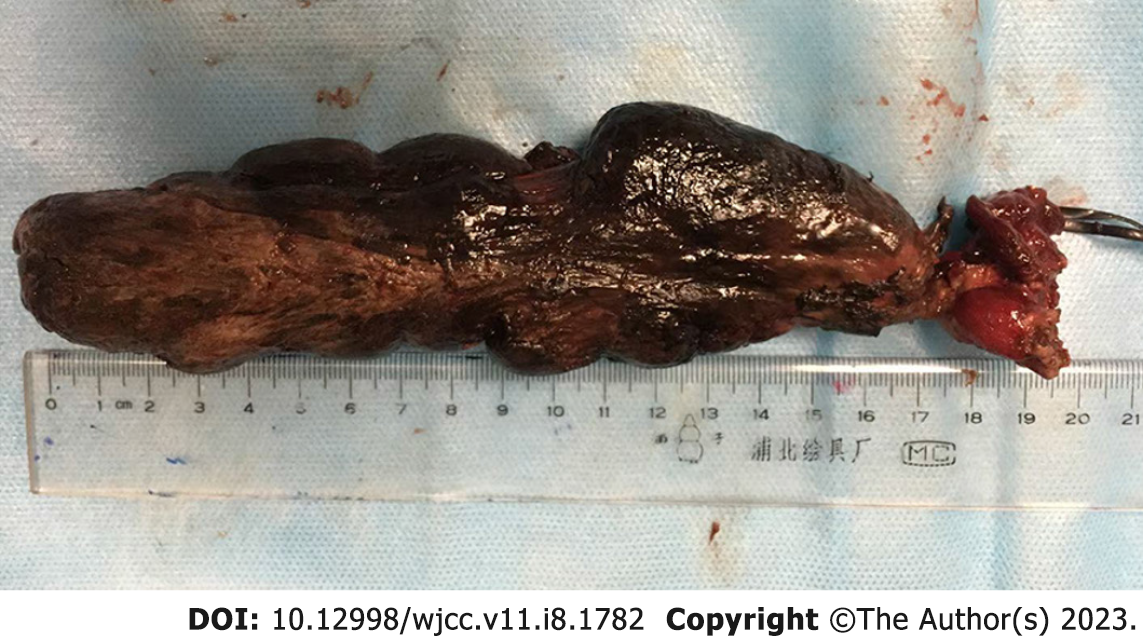Copyright
©The Author(s) 2023.
World J Clin Cases. Mar 16, 2023; 11(8): 1782-1787
Published online Mar 16, 2023. doi: 10.12998/wjcc.v11.i8.1782
Published online Mar 16, 2023. doi: 10.12998/wjcc.v11.i8.1782
Figure 1 Abdominal computed tomography images.
A: Coronal image; B: Sagittal image; C: Transverse image.
Figure 2 Endoscopy images.
A: The pedicle attached to the colon; B: Localized polyp patterns can be seen endoscopically; C: Circumferential pre-cutting around the lesion after submucosal injection; D: Endoscopic full-thickness resection of the polyp; E: Endoscopic transcanal incision; F: Closure of the wound using the purse-string closure method with nylon cord and multiple metallic clips.
Figure 3 Pathological section of the specimen (hematoxylin and eosin staining, 400×).
A: Histopathologic findings depicting widespread necrotic and liquified degenerated fibrous, smooth muscle and vascular adipose tissue; B: Lacunae of varying sizes intersperse with smooth muscle tissues. Necrotic degenerated epithelial lining is observed within the lumen.
Figure 4 Macroscopic view of the specimen (hematoxylin and eosin staining, 400×).
The specimen consists of a ham-hock-like mass with a stalk measuring 15.5 cm × 5.5 cm × 2.5 cm. The stalk was approximately 1.5 cm long and 0.7 cm in diameter. The parenchymatous mass was medium in texture, with a rough, dark red surface. The 3 cm × 2 cm × 2 cm mucosal tissue, which was dark red and smooth, was attached to the base of the stalk.
- Citation: Ye L, Zhong JH, Liu YP, Chen DD, Ni SY, Peng FQ, Zhang S. Extensively infarcted giant solitary hamartomatous polyp treated with endoscopic full-thickness resection: A case report. World J Clin Cases 2023; 11(8): 1782-1787
- URL: https://www.wjgnet.com/2307-8960/full/v11/i8/1782.htm
- DOI: https://dx.doi.org/10.12998/wjcc.v11.i8.1782
















